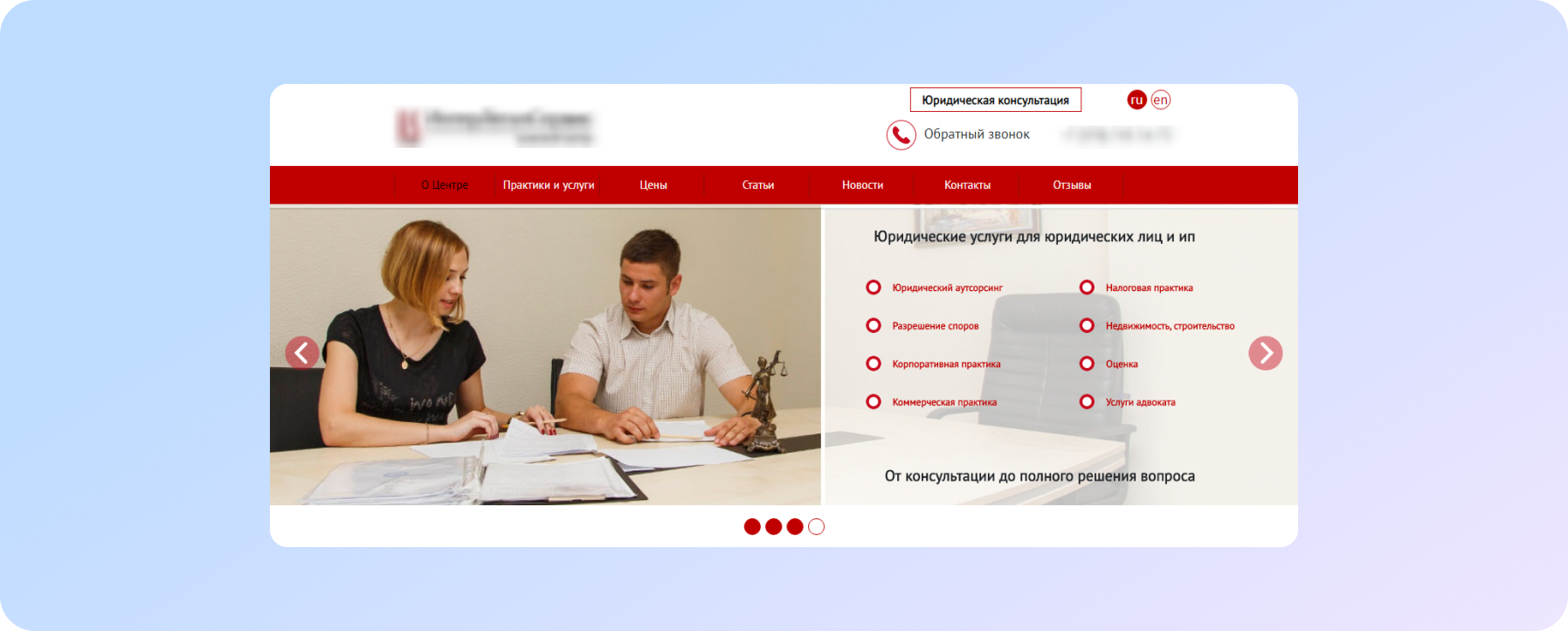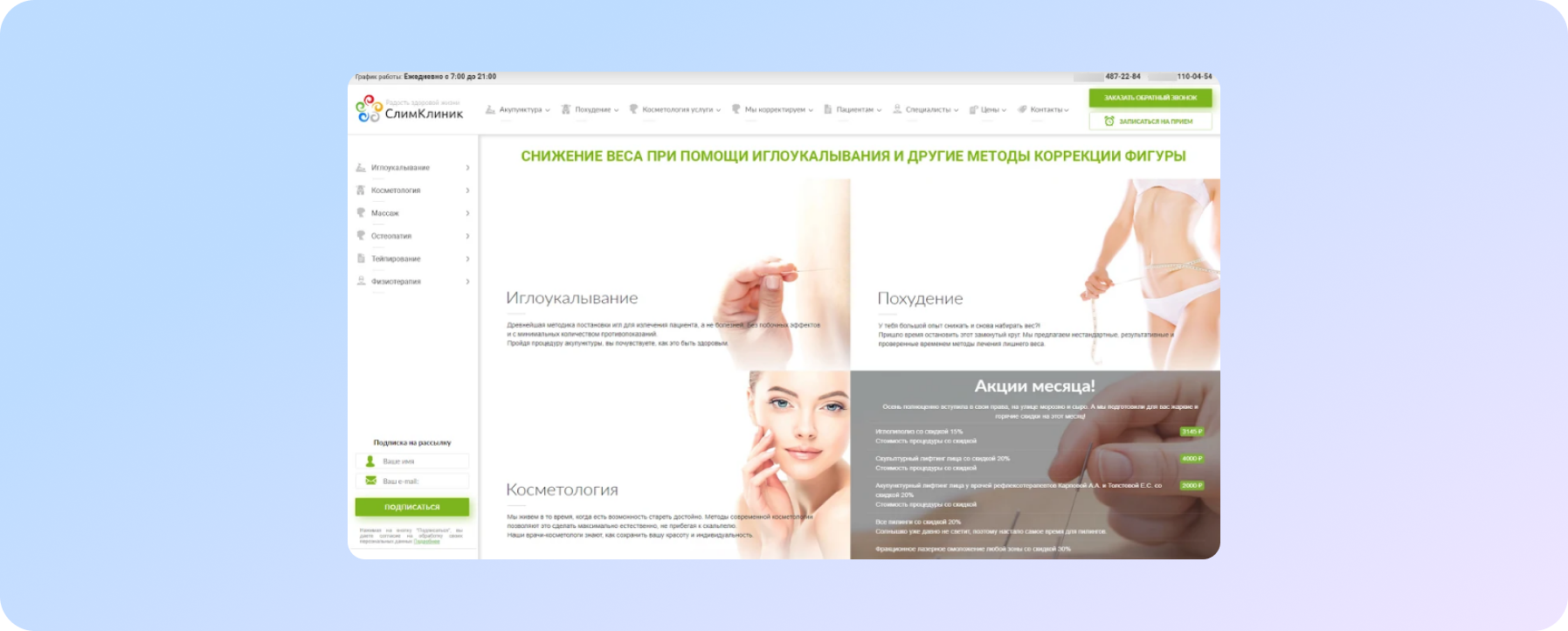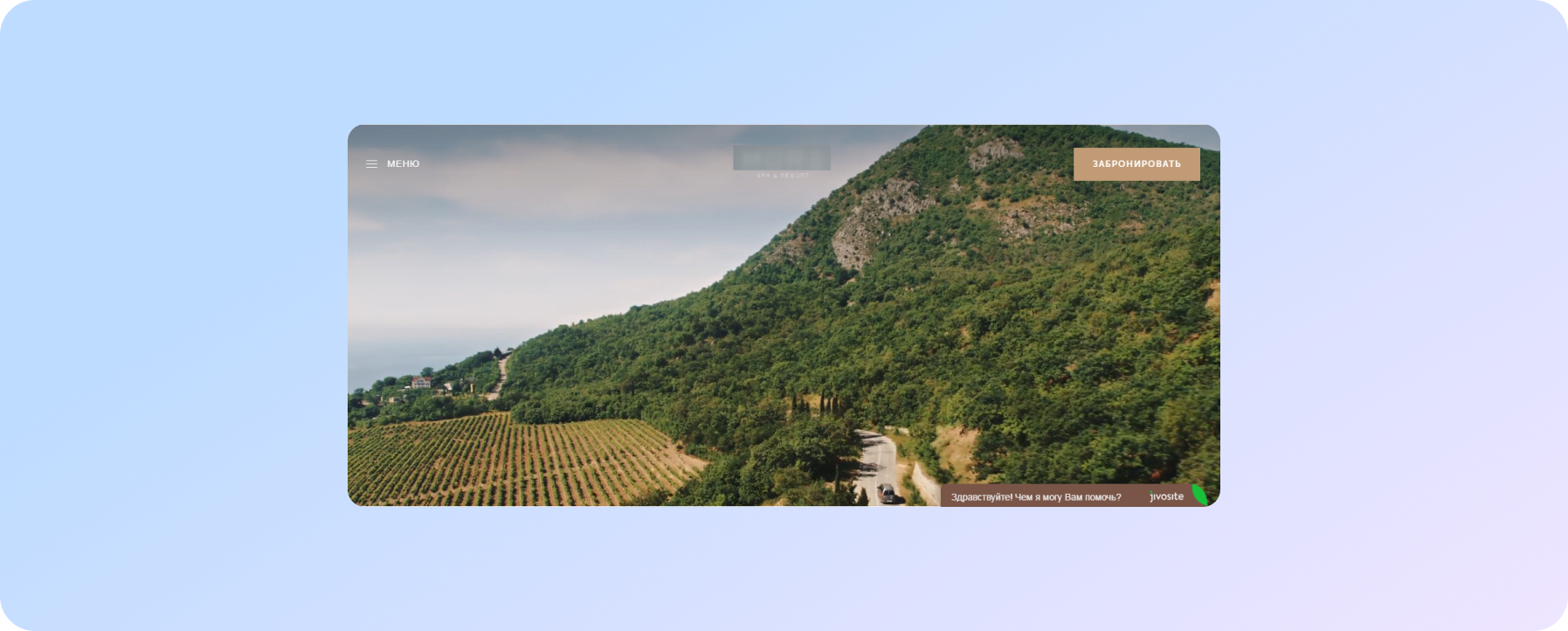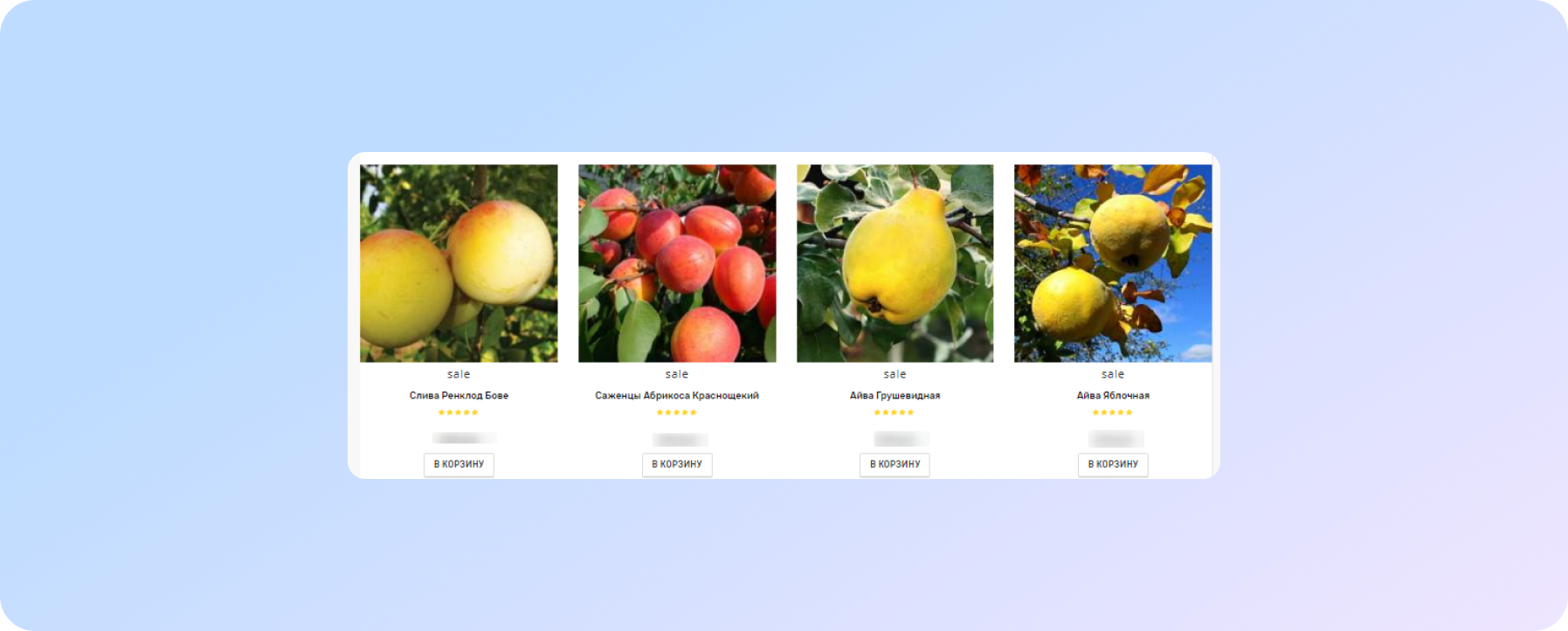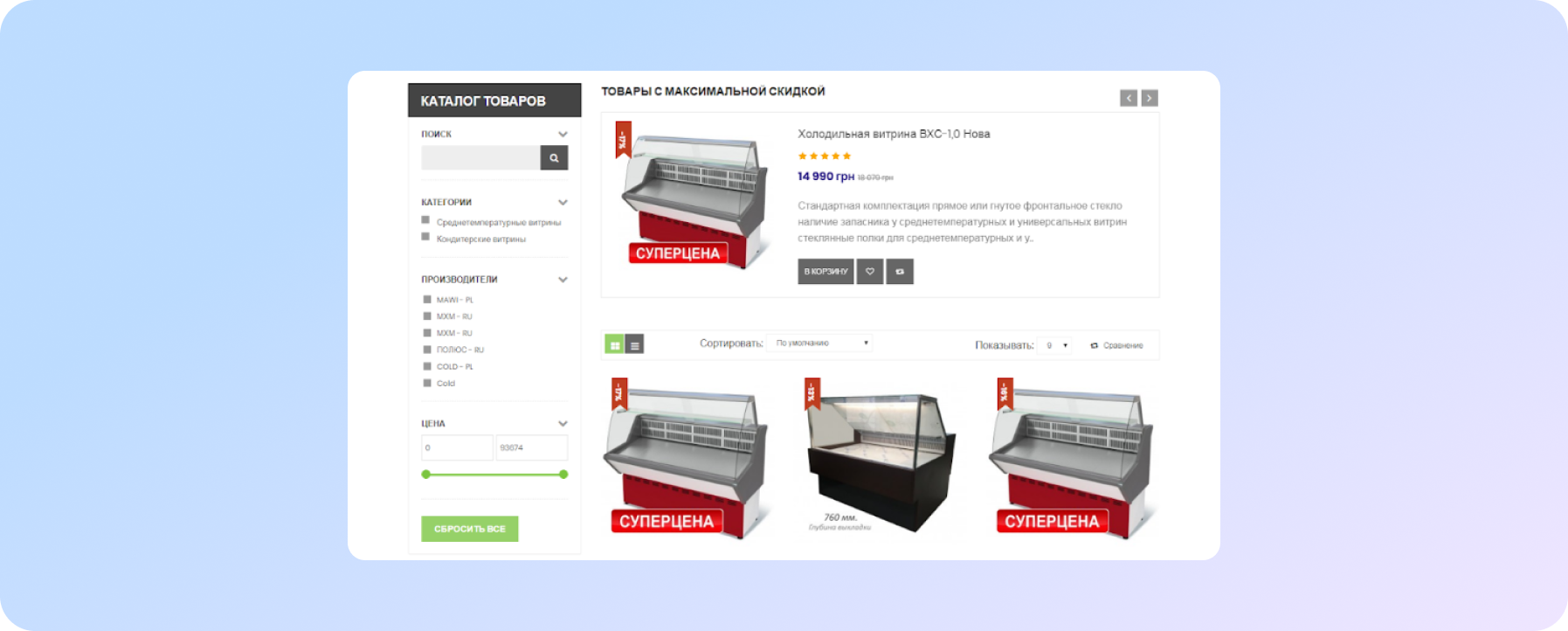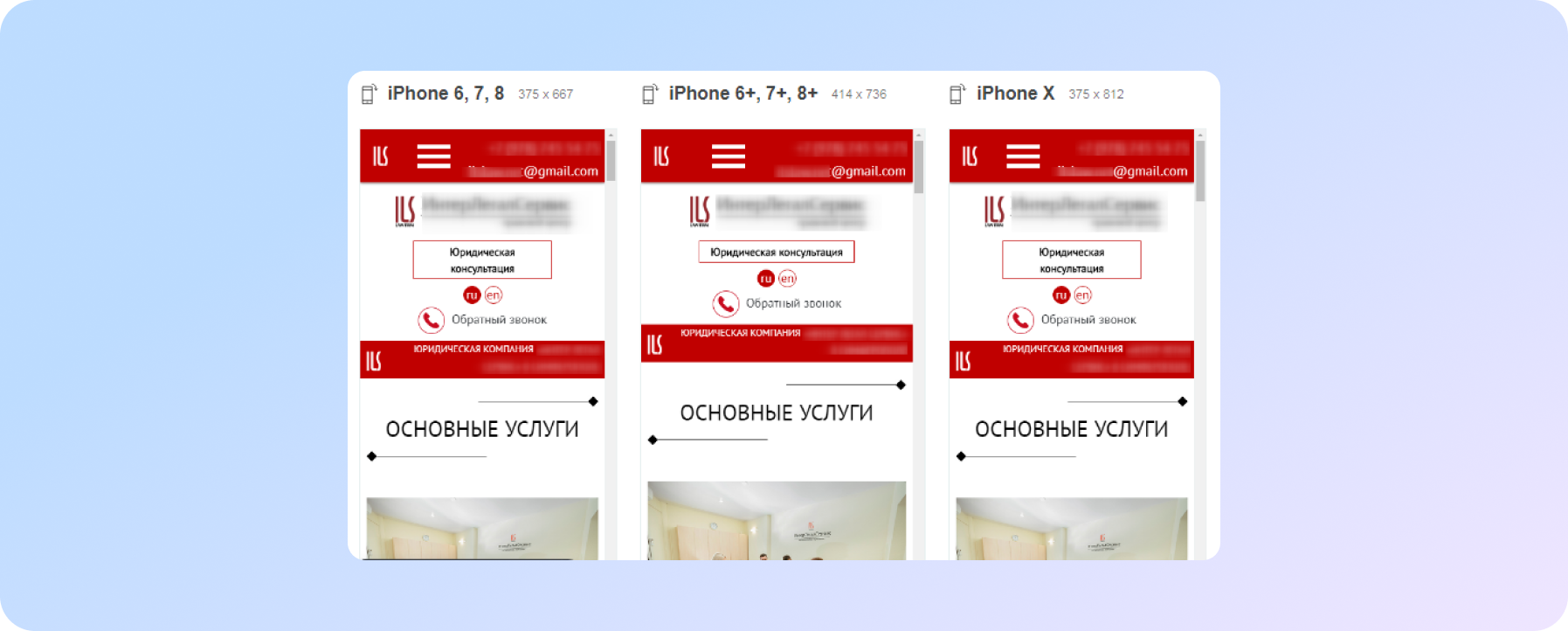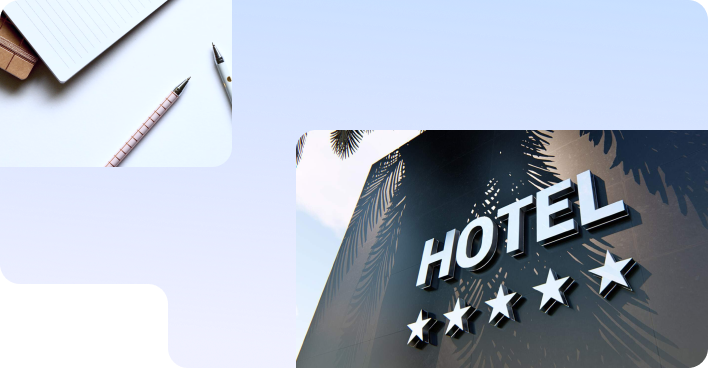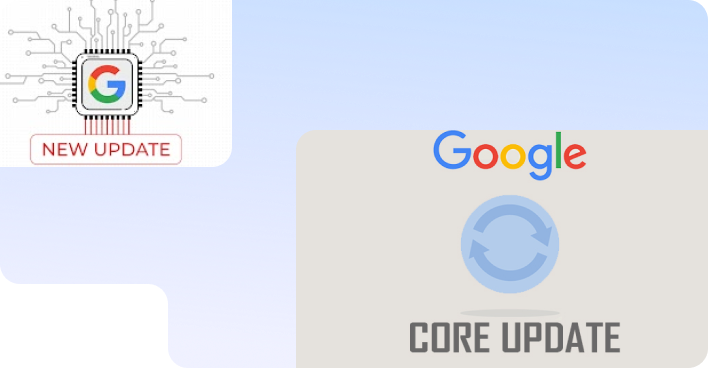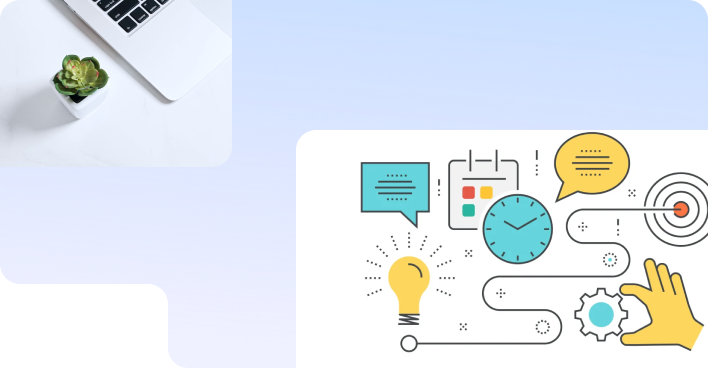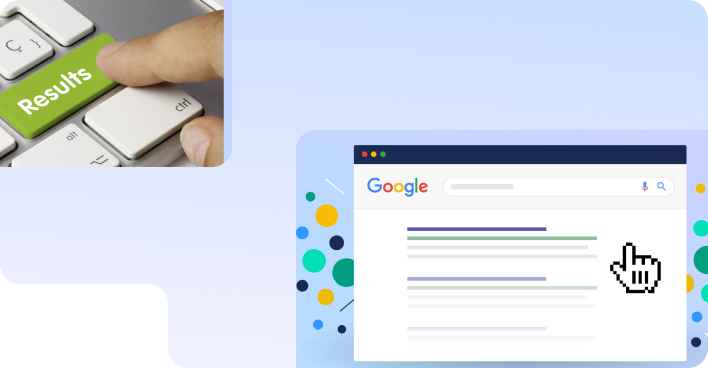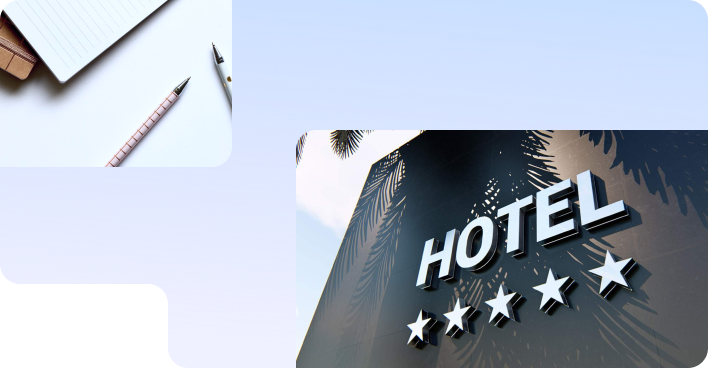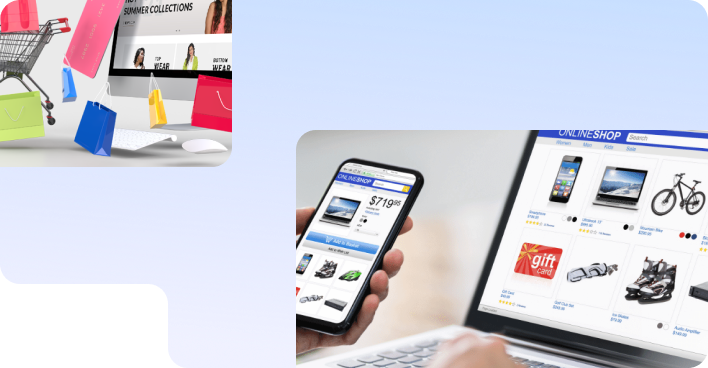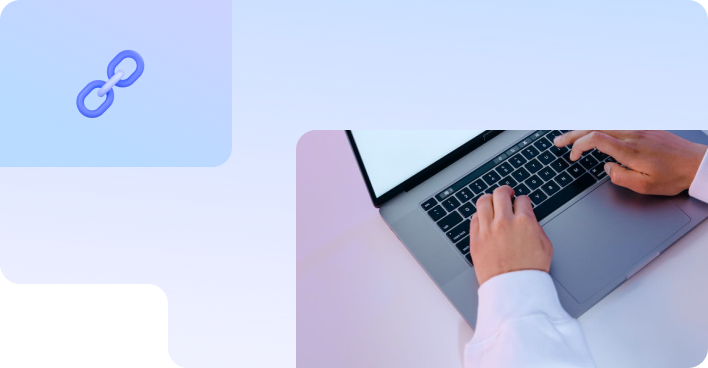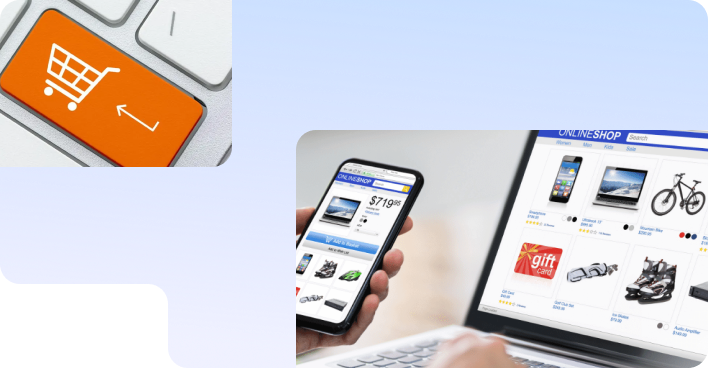No magic - just our painstaking joint work on the site
How to use the site to fulfill the sales plan?
We immediately answer the key question: you can increase sales if your site is initially designed correctly, meets business objectives, and is understandable to users. Therefore, the article should be read by everyone who wants his own website. You will learn how and what to talk about with the developer of your web resource. We will try to briefly highlight the main issues that an entrepreneur (owner or customer) needs to work out before developing a website for his company. Because only detailed answers to these questions will help the contracting agency get an effective tool at the end.
“There is nothing more complicated than developing a website,” we think every time when we are faced with the task of not only “creating a new face for a business in the Internet services market”, but making a tool for development, sales and a navigator for this business.
“Like the water cycle in nature, there is a cycle of processes in Internet marketing - one depends on the other. Therefore, if you see a drop in traffic, referrals or final sales, then analyze, check, test. We live in a world where everything can be sold, the main thing is to find the right approach;)»
“For 15 years we have been actively involved in the development of businesses using digital tools, we are constantly learning and improving. The experience is so huge that we can no longer keep it to ourselves and have begun to share it with you. Create for people and like among people, and you will understand that selling on the Internet is simple, effective and financially profitable.”
Analysis of priority business areas, points of development and study of competitors.
Let's take, for example, a site for promoting legal services. Let's say this company has accumulated a lot of expertise and positive experience in the field of corporate disputes. And it is for such cases that it is beneficial for the lawyers of this company to take on. But there are also low-cost services, such as drafting contracts and filing lawsuits.
Although the cost of these services is low, there is a lot of work for specialists. Therefore, before launching a website, the head of such a law company should ask himself the question: “What is profitable for me to sell? What is less profitable? And what does not matter in the growth of business revenues?
*An example of a site where the main focus is on corporate practice
Or take another example - the sale of manufactured goods for the home. The same question to the business owner: “Which products will I get the maximum benefit from selling on the site?”. We advise you to take and write a list of such goods directly with a pen on paper, and then prioritize what is most profitable and most important for you to sell. What will lead the company to revenue growth, and what will not affect the overall profit margins.
By answering this question for yourself, you will already know what to focus on building a strategy.
If you don’t know which key product/service you need to highlight, then the contractor won’t even guess about it and won’t reflect it on the website in any way.
All points of growth in the form of accents on the future site should be placed by the owner of the business, who is most interested in its development.
Once you've clearly spelled out what you'll be selling, look at how your competitors are doing it. The easiest way is to create a small table like this:
| Company name | What is good / what I like | I do not like / does not match the specifics of the product / confuses the user on the site |
| konkurent1.com |
|
|
| konkurent2.com |
|
|
The result of a competent analysis of competitors will be a technical task for creation a functional, informative, simple site, which in the same competitive niche will stand out with a competent presentation of information and user-friendly navigation.
Study of demand and segmentation of the target audience
After you have prioritized the sale of goods or services and studied how competitors present themselves on the Internet, you need to divide all possible potential buyers into groups.
For example, if a site is being developed for a legal services agency, then you need to understand who the agency’s services are intended for:
- only for individuals;
- only for legal entities;
- for both;
- for legal companies of the state apparatus, etc.
If you sell, for example, manufactured goods, then to whom:
- individuals - retail sales with delivery in the region;
- wholesalers – wholesale for dealer shops;
- wholesale and retail with self-delivery of goods, etc.
Studying the demand for each of the groups of potential buyers will help make the site not just an online business card of the company, but also an effective sales tool. Once you've grouped your target audience, explore the demand and behavior of each segment with these questions:
- How long does it take for this group to choose a product (based on the specifics of the product or service)?
- Which device is more likely to be used by a potential buyer or client to search for goods or services?
- What factors influence decision making?
- How is it convenient for this particular group of users to contact the online store/company website?
- What additional information might a user need when choosing a particular product?
- What answers to the questions does the user need to find on this page so that he does not need to continue searching?
In accordance with the specifics of each of the groups of the target audience, the developer of your site will build content on landing pages, as well as think over the path from the main page to the final product purchase page.
Due to the fact that we get the answers to all of the above questions from the customer of the site at SPRAVA, we build the content on each page of the site based on the specifications of the potential buyer's demand. Users are loyal and trustful of well-thought-out websites.
To determine how much we understand our potential buyers, answer their questions and what is the probability that the user will call or send a request from the site, we need to answer 3 questions:
- Clear?
- Comfortable?
- Informative?
These three questions should be asked at every stage of website development. And constantly improve the service, as soon as the prefix “NOT” appears in the answer to one of the questions.
Drawing up a strategic sales plan and performance indicators of the developed website
You have determined what you will sell on the site and to whom.
Now you need to think about how you will sell on the site, and find out indicators by which you can determine whether each sales tool is good enough and whether it meets your goals and objectives.
When you give a project to a contractor for implementation, be sure to provide him with the following information:
- How are you selling now?
- How much sales does the current site or other tools bring in?
- How do you plan to sell in 3 months?
- How many sales from this plan should be through the new site?
- Will the sales, marketing, delivery department cope with this amount of work?
That is, to decide that a new site should look like the site of some competitor, is not the task, the solution of which will make the site a competent sales tool.
And here is what the developer expects from you: “Now 30 requests per month come from the site. We need 60 orders a month from the new site, half of which will come online via order forms and half by phone.”
*We count the number of hits from the current site and set the KPI for the new site for each of the buttons + calls to the phone
Have you determined how much and how you will sell? Now convey this task to the contractor, tell him in an accessible and detailed way about all the nuances that you have analyzed and recorded for yourself.
With such a problem statement, developers will understand:
- where to place call to action buttons;
- at what stages of the sales funnel;
- what these buttons will be called;
- where to place phone numbers so that the user can call at any time;
- what communication channels should be indicated on the site as additional.\
If you determine for yourself what parameters will indicate that the site is effective, and build a sales plan according to these parameters for several months in advance, the specialists who will undertake the development of the site will understand what the result should be. They will understand it the way you understand it. And this is practically a success!
Why "practically", you ask? Because even with the fulfillment of all the points of your technical task:
The basis of success is to have the desire and time to participate in the process, give feedback, act as an expert, answer contractors' questions at all stages of website development.
The most popular question for site developers
Here he is:
How to make a user-friendly site that would meet the requirements of search engines and perform its main function: to sell?
Any answer to this question is a list of actions. There is no magic. Behind every cool site - a million calls, kilometers of technical tasks, tests, improvements, Skype calls.
Have you already decided on the main tasks that you set before developing the site? Have you put together a picture in your head of what will be an indicator of the effectiveness of this site? And do you have a product that you will sell? Excellent! We move on.
SEO Strategy. Here's what you should pay attention to first of all
“So SEO promotion comes after development,” you say. But developing a site without understanding that it will be promoted after is spending extra money on further development.
Let's take an example. You have a hotel. You have determined that the site performance indicator will be 60 bookings per day: half of them through the booking form, another half - through calls to the phone. You came to a web studio, announced your goals and got a website in 3 months. On the main page there is a panoramic photo of the hotel in full screen, the "Book" button and a phone number. You have received a product where the user has the opportunity to book a room and call you. Does everything meet the requirements?
For now, yes.
*Example of a site where the main page has a photo and a "Book" button
Next stage. You come to a company that specializes in SEO promotion, and they tell you that this will not work. The main page does not give a complete answer for the user, because he does not see anything on it except a photo, a button and a phone number. And you are redesigning the site to make it grow in search results.
Loss of time and additional investment, in turn, significantly worsen the dynamics of obtaining ROMI (return on marketing investment). Simply put, it will take you longer to get back the money you invested in the site.
That is why it is worth thinking about SEO strategy not after, but before development. And below we will consider the main parameters that you should pay attention to.
Site structure
Consider this item using the example of an online store of fruit tree seedlings. For example, you sell apricots, pears, plums. All this falls under the definition of "fruit trees". You ask the developer to make 1 category, name it "Fruit Trees" and place all the products that you sell there.
Then you come to an SEO specialist and want this page to be promoted under the queries “buy apricot seedlings”, “buy pear seedlings” and “buy plum seedlings”, and preferably in the TOP-3. But no.
In order for the page to fully meet the request, follow the rule: 1 landing page - 1 query cluster.
If you want the TOP for the query "buy pear seedlings", then create a page specifically with this product. And the user will be pleased to go to the page on the key request, where he will see the product of interest to him, and not everything. And search engines will find the page relevant to the query.
*Example of a site where products from different categories are displayed on the same page
The correct structure of an online store is one that meets the user's logic and allows search engine robots to index pages quickly and efficiently. Again:
The logical structure of building categories and subcategories on the site for the owner will not always be a logical structure for the user and search engines.
Therefore, do not forget that the site is made not only for you, but for the user, and search robots will evaluate how good it is. Stick to the basic rules:
- logic;
- low level of nesting;
- understandable names for the user and search engines;
- one product for one category, in other words, 1 page = 1 keyword cluster.
Semantic core
This point is related to the previous one, since the analysis of search queries will help you form a competent site structure. You will pre-specify the necessary categories and subcategories based on the frequency of queries and will not face the fact that at the beginning of the promotion you will have to make changes to the site structure to cover all the target keywords for SEO.
Completeness of the answer
If we are talking about an online store, then the landing page is always a category page. And just placing a few items on it is not enough. Put yourself in the shoes of the user: you typed in a Google search query “buy a washing machine” and went to the site to the category page of washing machines. You saw the assortment, images. Also in the best case you will find the price and the "Buy" button.
- But how to find built-in washing machines if there are no filters?
- Why should the user choose you, and not go to a competitor? Where to read about the benefits?
- What brands are represented on the site?
- Do you accomplish the installation?
- How can customers pay for the goods?
- How is the delivery organized?
All these questions buyer must find answers. And not on numerous pages of the site, but on one page - the one where he got from the search results. And you should think about it at the development stage.
Consider the main parameters that should be on the category page:
- Convenient filtering
- Sorting option (by price, alphabetically)
- Sufficient number of goods, price
- Buy Button
- Shipping and Payment Information
- Information about the brands you sell
- Block "Recommended products", "Recently you looked", "Buy with this product"
- Block with benefits
- Warranty Information
- Block with promotional offers
- Block with reviews
- Map
All these items, like the entire site as a whole, are adaptive for all devices.
*An example of a site where the category page has filters, sorting, benefits, a link to a page with information about shipping and credit, benefits.
You may want the original site that displays the puzzle when you access it. And only by solving it, the user sees the product. Or incredible animation on the site. BUT...
Between a convenient or original site, always choose the first.
After all, we are talking about sales and their growth, and not about the prize for the most unusual site.
Content plan and its implementation
“So there is nothing to fill yet - there is no site!” they tell us. Not certainly in that way. There is a structure, there is a semantic core. So you can easily move on to the content plan and writing articles in parallel with the work of programmers. Thus, by the time the development is completed, you will have the content ready, which means that the SEO specialist will have something to work with, and you can immediately start promoting, rather than spending extra time writing articles and delaying the moment of receiving ROMI.
On-page SEO
This is another pool of mistakes that are made when the site is made by one company that has no idea what SEO is, and another company is engaged in its promotion. It is desirable that everything be in the hands of one contractor, then there will be much less thorns on the way to a good product.
If you are looking for such a team, then write to us: SEO, PPC, development, SMM - we will help with any task.
But if you trusted two different specialists, then here's what to consider:
Your site must be adapted for SEO-promotion!
In order for a specialist to work to ensure that the site grows in search results, he must have the opportunity to do this. Don't ignore the correct use of “canonical”, “next”, and “prev” tags, proper title tag hierarchy, and other elements of technical SEO. You can receive all the requirements even before the start of development work, and thus significantly reduce the risk that the site will need to be finalized for promotion after it has been delivered.
The main thing to pay attention to:
- All pages must be created according to the structure of the site.
- You need to be able to add pages to the site.
- On each page of the site, it should be possible to write a unique title, description, and place a unique text.
- For pages of subcategories, it is desirable to prescribe the algorithm for generating title, description.
- For all pages, write the canonical tag.
- Pagination pages must have prev and next tags.
- There should be a clearly defined h1-h6 heading hierarchy.
- Breadcrumbs should be implemented on the site.
- URLs must be human-readable. That is, if the category is called ”drills”, then the URL should be "dreli" or "drills", not "category-1".
- Generate sitemap.xml and sitemap.html file.
- Optimize the performance of the 404 error page.
- Optimize site loading speed.
- Optimize your robots.txt(https://sprava.ua/en/blog/robots-txt) file.
- Set up redirects.
- Install analytics systems. Give SEO specialists access.
Performing all these works BEFORE will allow the SEO specialist to immediately start working with:
- content optimization;
- analytics;
- usability;
- fixing small bugs;
- external optimization (link-building).
In other words, optimization allows immediately after the start of the project (publishing a site on a domain) to squeeze the maximum out of it for growth in search results. This means that it will ultimately help to increase ROMI (return on marketing investment).
Our company has been developing and optimizing websites for more than 18 years, and the entire development process goes hand in hand with SEO specialists: from the moment the strategy was discussed, including the writing of the terms of reference and ending with the content. After us, there is no need to redo, except perhaps to improve more and more. Do you need a website?
We are gradually approaching the final stage. The site is ready. It's been opened to you on a laptop and everything looks exactly as you imagined it, both user-friendly and effective for promotion. Everything is provided! It's wonderful.
You arrive at the office, announce an urgent meeting, enter the conference room, everyone sits waiting. You open the site on a work computer to present the product to colleagues, and the phone is only half visible, product previews overlap each other, and the “Buy” button has completely crawled out of the borders of the block.
Testing
Your site should display correctly on all common devices and browsers.
Users have different models of laptops, tablets and smartphones, the screen resolution is different everywhere. Give enough time to testing so that in the future, when the traffic on the site grows, do not lose sales simply because the person could not see the phone number or click on the “Buy” button.
Only after testing and fixing bugs, the project can be considered delivered.
We have come to the last stage of site development.
Website launch and improvement
Yes, this is not a mistake. You make a website, invest a lot of effort, money, and time into it, and then start improving it.
It is very important for the site customer to understand that improving the site is exactly the same process as creating it. And it is the improvement of various details that makes the site better.
Do you want a website? Think, develop and improve. This only way.
All the preliminary work, which was written above, will allow you to significantly reduce the number of necessary improvements. But you have to constantly improve. There can be many reasons for this. Consider the main ones:
- Theory ends, practice begins
Real visitors come to your site, your target audience. And it is thanks to the constant analysis of behavioral factors that you can determine what they lack, improve usability and increase the percentage of those users who will stay on your site and take the targeted action. - Changes in ranking algorithms
Search engines are constantly changing how ranking principles, and your site must adapt to these changes. Otherwise, your competitors will be significantly higher than you. It should be understood that this may require additional costs, but it will help you maintain the existing profit from the resource or even increase it. - Connecting additional features
For example, in the past, you simply received site requests and then processed them manually. But the number of orders is growing, and you decide to connect CRM and online payment. This requires technical improvements. - Extension of site versions
You have noticed demand for your product or service in other countries and know exactly what you can deliver to these regions. It is worth thinking about adding versions of the site in the languages of these countries - this will allow you to increase the number of sales.
Failure to improve the site entails the loss of potential customers.
The market changes from day to day. And what suited the buyer yesterday is no longer enough to make a purchase today. Constant site modernization is a guarantee that your resource will remain modern and in demand and grow in search results.
When developing websites and promoting them in the future, we regularly analyze usability, identify problems that the user encounters, and improve the resource. There is no end point here, everything changes from day to day, which means that demand and requirements are also different. In order not to delay the process of making adjustments, we always suggest adding a technical package to the SEO promotion package. The cost of such a package is calculated depending on the number of hours required for work – from 1,500 UAH/month and more.
But what is a big plus: this package is cumulative. This means that if this month we have not worked out all the paid hours, then they will be added to the next month
There can be 2 options for interaction between the customer and us during the implementation of technical work:
First option.
| SPRAVA analyzes usability, makes a list of recommendations for improving the site | CUSTOMER approves recommendations | SPRAVA implements and tests site improvements |
Second option.
| You need to add a promotion, change prices, add a button, whatever! You write to us | We evaluate the work, voice the budgets. You are claiming. | We implement and test. And everyone is happy |
You need it? Let us help you!
We care about improving your sales :)



